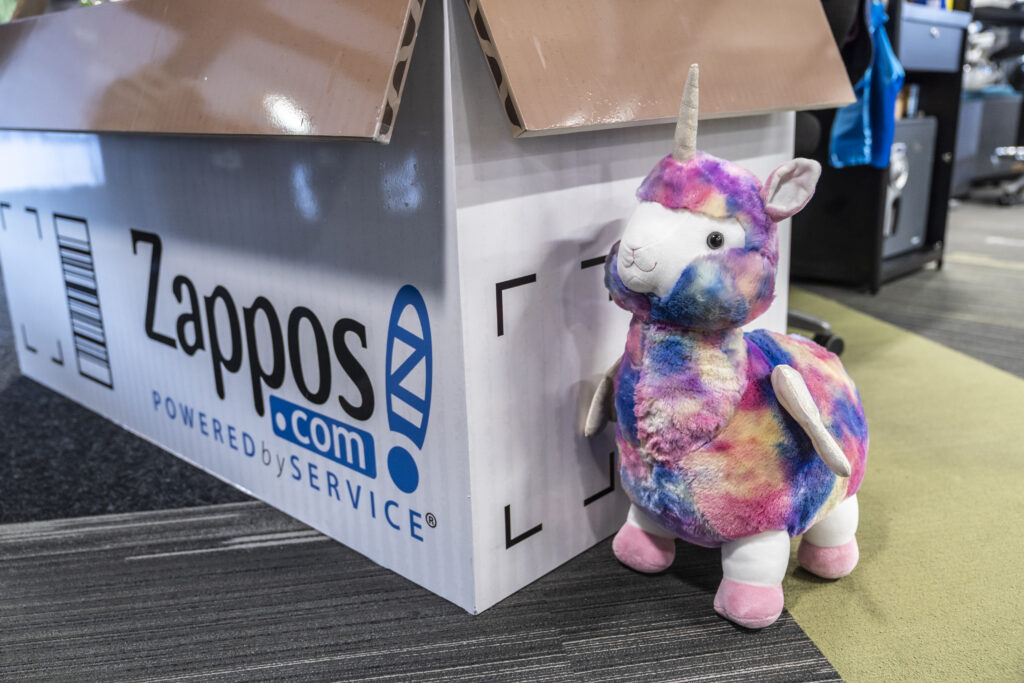
In today’s competitive landscape, customer loyalty is more precious than ever. But how do you bridge the gap between the C-suite and the hearts and minds of your customers? The answer lies in a powerful strategy: CEO-customer engagement.
Imagine a world where customers feel not just valued, but truly heard. Imagine a company where the CEO isn’t just a name on a letterhead, but a leader actively fostering connection and understanding.
This is the transformative power of CEO-customer engagement, a journey that starts with a single step: a CEO willing to break down barriers and connect with the very people they serve.
Table of Contents
Key Takeaways
- Engaging with customers can benefit the company. When CEOs interact with customers, it can improve brand reputation, increase customer loyalty, and provide valuable insights for business growth.
- Enhance the overall customer experience: CEO engagement can contribute to enhancing the customer journey by providing personalized interactions and addressing customer needs directly.
- Utilize effective problem-solving strategies: CEOs engaging with customers can efficiently address issues, gather feedback, and implement solutions promptly, improving overall customer satisfaction.
- Make customers feel appreciated and valued: Direct interactions with the CEO make customers feel important, strengthening their emotional connection to the brand and fostering long-term relationships.
- Foster a customer-centric organizational culture: CEO involvement in customer interactions sets a precedent for prioritizing customer needs throughout the company, leading to better alignment with customer expectations.
- Determine the optimal frequency of CEO interactions: Finding the right balance in CEO engagement is crucial to maintain a consistent presence without overwhelming customers or neglecting other essential responsibilities.
- Expand the scope of CEO involvement: CEOs should explore various channels and methods to engage with customers, including social media, events, surveys, and customer service interactions, to maximize impact and reach.
Benefits of CEO-Customer Engagement
Personalized Interactions
CEOs engaging with customers allows for personalized interactions, creating a sense of connection and loyalty. By directly communicating with customers, CEOs can understand their needs and preferences better.
In 2020, a customer emailed Amazon CEO Jeff Bezos directly about their concerns regarding Black Lives Matter merchandise on the platform. Bezos’ response went public, showing not only that he heard the customer’s voice but also his stance on the Black Lives Matter movement.
This personalized interaction demonstrated Amazon’s commitment to inclusivity and social responsibility, potentially fostering customer loyalty and a sense of connection with the brand.
Prompt Issue Resolution
Direct responses from the CEO to customer feedback demonstrate a commitment to addressing concerns promptly. This proactive approach enhances customer satisfaction and builds trust in the company’s responsiveness.
A prime example of this is Tony Hsieh, CEO of Zappos. As the story goes, Hsieh took clients out for a late-night pizza craving. Despite Zappos not delivering food, the on-call representative at 2 AM found nearby open pizzerias and placed the order for the client.
This instance exemplifies Hsieh’s instilled company culture of exceptional customer service, even beyond the typical product range. It highlights a CEO’s direct influence on fostering a proactive approach to addressing customer needs, ultimately building trust and satisfaction.

Exclusive Insights and Influence
When CEOs engage with customers, they offer exclusive insights into the company’s vision and values. Leveraging their influence, CEOs can shape positive perceptions among customers, highlighting the organization’s strengths and commitment to excellence.
Enhancing the Customer Journey
Implementing Strategies
To enhance the customer journey, CEOs can implement strategies like gathering customer feedback to identify touchpoints for improvement. By analyzing these insights, companies can tailor their products and services to meet customer needs effectively.
Strengthening Relationships
One effective way to strengthen relationships is through face-to-face interactions. Hosting CEO meetings allows customers to express their thoughts directly, fostering a sense of connection and trust. This personal touch can significantly impact customer loyalty.
Efficient Problem-Solving Techniques
Quick Solutions
CEOs can expedite solutions for complex customer issues. By being directly involved, they can ensure problems are resolved promptly.
Addressing complaints promptly shows customers that the company values their time and concerns. This proactive approach can lead to increased customer satisfaction and loyalty.

CEO Involvement
Utilizing CEO involvement in resolving complex customer problems can have a significant impact. When CEOs take matters into their own hands, it demonstrates a commitment to customer service excellence.
Direct engagement from the CEO can also enhance the company’s reputation and build trust with customers. This hands-on approach fosters a culture of accountability and responsiveness within the organization.
Proactive Measures
Implementing proactive measures is crucial to prevent recurring issues and improve overall customer satisfaction. By analyzing trends and feedback, companies can anticipate potential problems before they escalate.
Regularly gathering insights from various customer groups allows CEOs to stay informed about evolving needs and challenges. This enables them to proactively address issues before they become widespread concerns.
Making Customers Feel Valued
Acknowledging and Valuing Feedback
Customers appreciate when businesses acknowledge their feedback promptly and make improvements based on their suggestions. By actively seeking out and responding to customer input, companies can show that they value their opinions.
Listening to what people have to say can lead to valuable insights for businesses, helping them tailor their products or services to better meet customer needs. This practice fosters trust and loyalty among customers.

Demonstrating Appreciation
Showing gratitude for customer loyalty is vital in making them feel valued. Simple gestures such as sending personalized thank you notes or offering exclusive discounts can go a long way in expressing appreciation.
By recognizing and rewarding loyal customers, companies can strengthen their relationships with them, leading to increased satisfaction and retention rates. This approach also encourages repeat business and positive word-of-mouth referrals.
Personalizing Interactions
Personalizing interactions with customers is key to making them feel important and appreciated. Addressing customers by name, remembering their preferences, and tailoring recommendations based on their past purchases are effective ways to show individualized care.
Achieving a Customer-Centric Culture
Aligning Strategies
To achieve a customer-centric culture, CEOs must align company strategies with customer needs and preferences. By engaging directly with customers, CEOs gain valuable insights that inform strategic decisions.
Infusing Values
Making customer focus a priority. When CEOs prioritize customer engagement, it sends a clear message to employees about the importance of putting customers at the forefront of every decision throughout the organization.

Prioritizing Decisions
Prioritizing decisions that enhance the customer experience is key to fostering a customer-centric culture. By making customer satisfaction the focal point of all operations, companies can drive positive outcomes and improve customer loyalty.
Frequency of CEO Interactions
Schedule Regular Interactions
CEOs should schedule regular interactions with customers to stay connected and gather valuable insights. By engaging with diverse customer segments, they gain a deeper understanding of varying needs and preferences.
Maintaining a consistent presence allows CEOs to build trust and rapport with customers. This approach fosters loyalty and demonstrates the company’s commitment to addressing customer concerns promptly.
While face-to-face meetings and emails are valuable tools, CEOs can explore additional communication channels for broader customer engagement such as:
- Customer Surveys: Regularly conduct customer satisfaction surveys to gather feedback on specific products, services, or overall brand perception.
- Customer Hotlines: Maintain a dedicated customer hotline for prompt issue resolution and direct feedback gathering.
- Internal Communication Platforms: Encourage employees to share positive customer interactions or feedback with the CEO. This allows the CEO to stay informed about customer experiences and identify areas for improvement.
Balance Availability
It is crucial for CEOs to balance availability for customer interactions with their operational responsibilities. While engaging with customers is vital, CEOs must ensure that their core duties are not neglected.
By finding a harmonious balance, CEOs can effectively manage their time between interacting with customers and overseeing strategic decisions within the organization. This equilibrium ensures sustained customer engagement without compromising business operations.

Optimize Interaction
CEOs should optimize interaction frequency based on customer engagement levels and feedback. By analyzing data on customer responses and participation, CEOs can tailor their interactions to maximize impact.
Adjusting the frequency of interactions allows CEOs to adapt to changing customer needs and market dynamics swiftly. This proactive approach enables CEOs to address emerging issues promptly and enhance overall customer satisfaction levels.
Broadening the CEO’s Involvement
Social Media Engagement
Social media platforms offer a dynamic space for CEOs to connect directly with customers and build a more personal brand. Here are creative ways CEOs can leverage social media for engagement:
- Responding to Comments and Mentions: Actively respond to customer comments and mentions, demonstrating attentiveness and a willingness to address concerns. This personalized approach fosters trust and loyalty.
- Participating in Twitter Threads: Engage in relevant Twitter threads by offering insights or responding to customer questions. This allows CEOs to showcase expertise and establish themselves as thought leaders within the industry.
- Live Video Chats (AMAs): Host live Ask Me Anything (AMA) sessions on platforms like Instagram or YouTube. This format fosters real-time engagement and allows customers to directly ask questions and receive unfiltered responses from the CEO.
- Taking Over Accounts Partner with customer service or marketing teams for social media account takeovers. CEOs can provide a behind-the-scenes glimpse into their day or answer customer questions directly through these accounts.
- Social Media Challenges: Collaborate with marketing teams to develop engaging social media challenges that encourage customer participation. This can be a fun way to promote brand awareness and user-generated content.
Innovative Connection Strategies
Innovate by leveraging virtual reality (VR) or augmented reality (AR) to create immersive experiences for customers. These technologies can enhance customer engagement and foster a deeper connection.
Collaborating with marketing teams to create interactive campaigns can further enhance the CEO’s visibility and accessibility. By incorporating gamification elements, CEOs can make customer interactions more engaging and memorable.
Participation in Customer Initiatives
Encouraging CEOs to actively participate in customer-focused initiatives can demonstrate a commitment to customer satisfaction. Joining focus groups or attending product testing sessions allows CEOs to gather firsthand feedback.
Attending industry events or trade shows provides CEOs with opportunities to engage directly with customers. By listening to their concerns and suggestions, CEOs can gain valuable insights for strategic decision-making.

Challenges and Counterarguments
Lack of Time
Busy CEOs might be concerned about balancing core duties with customer interactions. However, time invested in customer engagement can lead to increased customer satisfaction, loyalty, and reduced churn, ultimately saving time and resources in the long run.
Resource Constraints
Implementing engagement strategies might require additional resources for training, communication tools, or managing social media presence. However, CEOs can optimize resource allocation by leveraging existing communication channels (e.g., email marketing tools, internal communication platforms) and collaborating with marketing teams.
For example, marketing teams can assist with social media scheduling and content creation, allowing CEOs to focus on high-impact interactions like responding to customer comments or participating in live Q&A sessions.
Negative Feedback
CEOs need to be prepared to handle online criticism or negative customer experiences effectively. Therefore, it is important to develop a clear communication strategy for handling criticism. Respond professionally, acknowledge concerns, and outline solutions where possible.
Final Remarks
The path of CEO-customer engagement isn’t always easy. It requires dedication, a willingness to listen, and a commitment to continuous improvement. But the rewards are immeasurable.
By fostering genuine connections with your customers, you’ll not only build brand loyalty and customer satisfaction, but also ignite a spark of inspiration within your organization. Imagine the ripple effect when employees witness a CEO prioritizing customer voices. It can spark a cultural shift, transforming your company into a customer-centric powerhouse.
So, are you ready to embark on this exciting journey? Let’s start by redefining the relationship between CEO and customer, one meaningful interaction at a time.
Related Article:
The following article may contain the author’s opinions and interpretations of the subject matter. Any of the products, services, or platforms mentioned is not sponsored or affiliated.
Featured Image courtesy of vector_corp on Freepik
